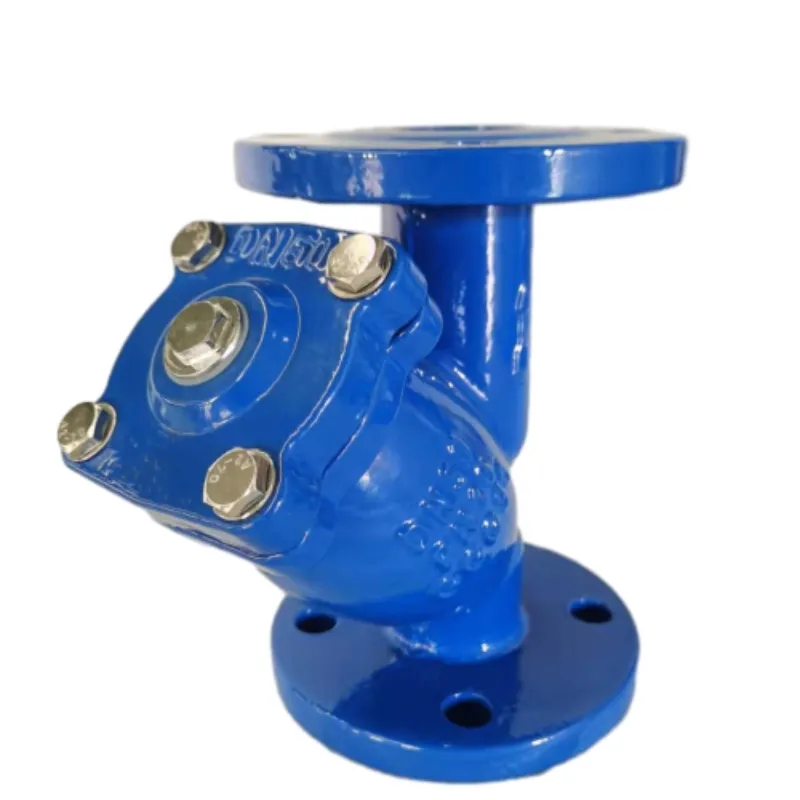Gear-Driven Wafer Type Butterfly Valve for Efficient Flow Control Applications
Gear Operated Wafer Type Butterfly Valve An Overview
Butterfly valves are essential components in various industrial applications, often used for regulating flow in piping systems. Among the numerous designs available, the gear operated wafer type butterfly valve stands out for its unique characteristics and operational advantages. This article aims to provide an in-depth understanding of this valve type, highlighting its design features, applications, and benefits.
Design Features
The gear operated wafer type butterfly valve consists of a circular disc that pivots around a central axis to control flow. Its wafer design means that the valve body is sandwiched between two flanges, allowing for easy installation between pipe segments. The gear mechanism allows for the smooth and precise operation of the valve, making it suitable for various types of industrial processes.
The valve body is typically made from materials like cast iron, stainless steel, or PVC, depending on the application and fluid being handled. The disc is often constructed from durable materials designed to withstand wear and corrosion. The gear mechanism can vary in complexity; some may employ a simple spur gear for manual operation, while others may integrate more advanced systems for remote or automated control.
Operation Mechanism
The primary advantage of gear operation in butterfly valves lies in the ability to manage larger valves with greater ease and accuracy. Manual operation can be challenging for larger valve sizes due to increased resistance and torque requirements. Integrating a gear mechanism not only reduces the effort needed to turn the valve but also enhances precision in flow control.
The gear ratio determines how the torque provided by the operator translates into movement of the valve disc. By using a higher gear ratio, operators can open or close larger valves without needing excessive physical strength, which is especially beneficial in demanding environments.
Applications
gear operated wafer type butterfly valve

Gear operated wafer type butterfly valves are widely used in various sectors, including water treatment, chemical processing, power generation, and HVAC systems. Their versatility allows for application in both liquid and gas flow control. Additionally, industries utilizing corrosive or high-temperature fluids frequently select these valves due to their robust material options and reliable performance.
In water treatment facilities, these valves are critical in managing flow rates during different stages of the purification and distribution process. In the chemical industry, they facilitate safe handling of aggressive fluids and gases, ensuring process efficiency while maintaining safety standards.
Benefits
One of the most significant advantages of these valves is their space-saving design. The wafer type construction requires less installation space than flanged valves, making them an ideal choice for compact systems. Furthermore, the simplicity of their design allows for easier maintenance, reducing downtime and operational costs.
Efficiency is another critical benefit, as butterfly valves offer quick opening and closing actions. This rapid response is essential in processes requiring immediate flow regulation or in emergency situations.
Moreover, the gear-operated mechanism enhances the valve's lifespan by distributing the operational load more evenly. Operators can engage the valve without applying excessive force, thereby reducing wear on components and extending the intervals between maintenance checks.
Conclusion
The gear operated wafer type butterfly valve is a remarkable solution for flow control in numerous industrial applications. Its efficient design, coupled with the advantages of gear operation, makes it indispensable for complex systems. With ongoing advancements in materials and manufacturing techniques, these valves will continue to evolve, offering even greater reliability and performance in future applications. This versatility and durability position the gear operated wafer type butterfly valve as a preferred choice for engineers and operators alike in the ever-demanding landscape of industrial fluid management.
-
The Smarter Choice for Pedestrian AreasNewsJun.30,2025
-
The Gold Standard in Round Drain CoversNewsJun.30,2025
-
The Gold Standard in Manhole Cover SystemsNewsJun.30,2025
-
Superior Drainage Solutions with Premium Gully GratesNewsJun.30,2025
-
Superior Drainage Solutions for Global InfrastructureNewsJun.30,2025
-
Square Manhole Solutions for Modern InfrastructureNewsJun.30,2025
-
Premium Manhole Covers for Modern InfrastructureNewsJun.30,2025
